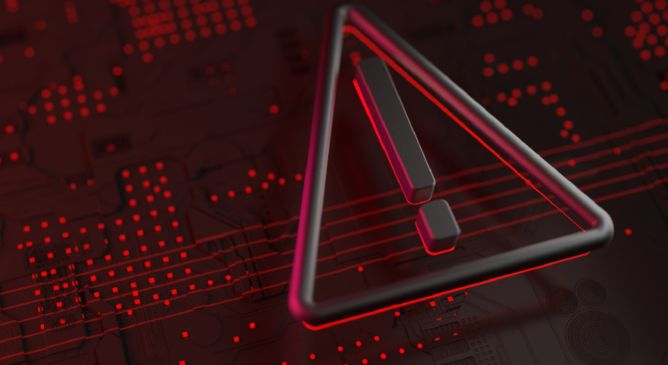QR Codes: Convenience or Cyberthreat?

Evolving phishing threats, such as QR code attacks, pose significant risks to organizations across various industries, including retail, healthcare, construction, and engineering. Such modern attacks urge businesses targeted by cybercriminals to adopt robust protection to safeguard sensitive information against data breaches, exfiltration, un-authorization, or illegal access. These vulnerabilities could further be leveraged for additional attacks.
QR code attacks on the rise
Phishing emails continues to be the number one attack vector for organizations. A QR code phishing, or quishing attack, is a modern social engineering cyberattack technique manipulating users into giving away personal and financial information or downloading malware. It targets C-level executives and the highest strategic roles within a company.
Quishing can bypass traditional security email gateways, evading email filtering tools and identity authentication. This allows cyberattacks to move from a protected email to the user’s less secure mobile device, where cybercriminals can obtain confidential information, such as payment details, for fraudulent purposes. For instance, a malicious QR code hidden in PDF or an image (JPEG/PNG) file attached to an email can bypass email security protection, such as filtering and flagging. This allows the email to be delivered directly to the user’s inbox without being analyzed for clickable content.
According to Egress Report 2024, “phishing remains the top attack vector with 94% of organizations falling victim through modern attack techniques that have expanded beyond email to collaboration tools and Cybersecurity leaders admitted that they are stressed about email security.” Such attacks include compromised supply chain email accounts and account takeovers (ATO). Research also highlighted the impact of generative AI (GenAI) enabling attackers to develop targeted phishing emails and produce malware. With GenAI, sophisticated threats like QR code phishing, credential phishing, AI-based email threats, or business email compromise (BEC) attacks continue to evolve. This increases the risk of attack surface expansion in email and collaboration environments.
How can organizations mitigate the risk of QR code attacks?
Businesses are challenged to identify the risk and improve their security posture to avoid the costs and implications of data leakage, reputational consequences, IT downtime, and technological disruption.
To recognizing quishing, IT admin and SOC teams need real-time protection capabilities to prevent QR code malicious attacks.
Common signs include:
- Unusual sources. Be cautious of QR codes from unexpected or unverified sources, such as random flyers, unsolicited emails, or unknown websites.
- Too good to be true. Verify QR codes promising rewards, discounts, or prizes—they could be traps. Scammers often use enticing offers to lure victims.
- Complex URLs. Inspect the URL embedded in the QR code. If it is excessively long, convoluted, or contains random characters, it could lead to a phishing site.
- Misspellings or odd characters. Check for misspelled words or unusual characters within the QR code. Legitimate companies usually pay attention to details.
Employees require training to enhance their attentiveness in detecting quishing when receiving QR code-based emails or accessing embedded links.
Common signs include:
- No context. Exercise caution if the QR code lacks context or appears out of place, such as QR codes randomly placed in a public area.
- Web links. Avoid sites accessed through a QR codes that request payments. Instead, enter a known and trusted URL for transactions.
- Overlays. Be wary if the QR code is placed over existing signs or labels, as scammers may try to cover up legitimate information.
- Too much information: Be skeptical of QR codes that ask for excessive permissions (e.g., access to your camera, contacts, or location) beyond what is necessary.
The growing use of QR codes as a phishing vector underscores the importance of vigilance and security awareness when scanning them.
A proactive approach to QR code-based phishing attacks (quishing)
Trend Vision One™ – Email and Collaboration Security enables you to swiftly detect and respond to user-targeted threats. It disrupts the QR code phishing attack chain, and allows you to streamline detections, risk posture, and mitigation across your messaging environment.
Provide your team with enhanced security against malicious QR codes with AI-powered advanced analytics and pre-delivery scanning designed to intercept and neutralize phishing attacks before they reach your inbox.
Benefit from real-time extraction of QR code links from emails, followed by comprehensive scanning and remediation actions on various file and image formats (JPEG, PNG, BMP, TIFF, GIF, .webP) to ensure security.
When an email body and/or email attachment containing a QR code is detected, your IT admin can make contextualized decisions and take remedial actions conveniently from a centralized platform.
These actions include:
- Tag subject
- Add disclaimer
- Pass
- Quarantine
- Delete
Read More HERE



